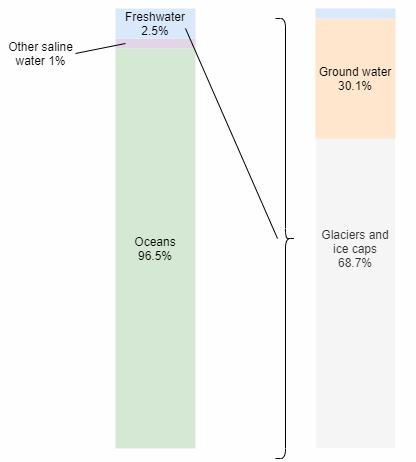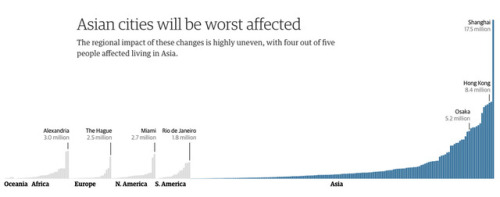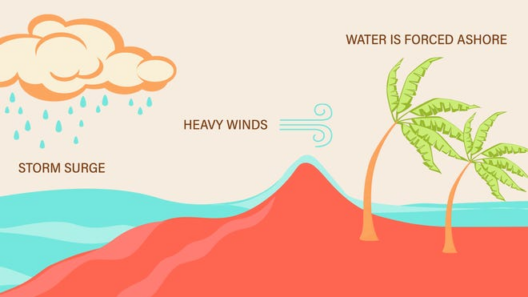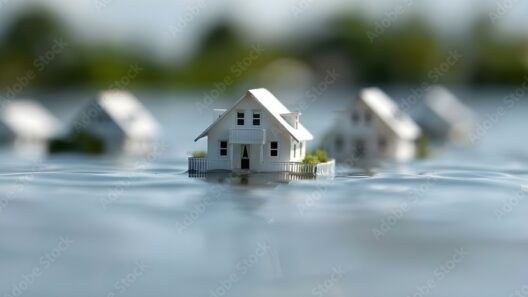Rising sea levels have become an increasingly visible consequence of climate change, capturing the attention of scientists, policymakers, and citizens alike. The encroaching tides have a direct impact on coastal cities, ecosystems, and economies. Understanding the multifaceted reasons behind sea level rise is essential to formulate effective mitigation strategies. This article delves into the primary factors contributing to this phenomenon, shedding light on the intricate interplay of natural processes and human activities.
Before diving into the specifics, it’s important to recognize that sea level rise is not a singular event but rather a manifestation of various interlinked processes. The fascination with this topic stems from its immediate relevance; coastal communities worldwide are witnessing firsthand the implications of rising tides, making it an urgent issue worthy of exploration.
One of the most prominent factors contributing to rising sea levels is thermal expansion. As global temperatures rise, ocean waters absorb heat and expand. This physical phenomenon leads to an increase in sea volume, contributing significantly to rising ocean levels. When water heats up, it becomes less dense and occupies a larger volume. Some estimates suggest that thermal expansion accounts for approximately half of the observed rise in global mean sea levels in the last century. The alarming rate of global warming amplifies this process, illustrating the importance of addressing greenhouse gas emissions.
An additional critical element behind rising sea levels is the alarming rate of polar ice melt. The polar regions, particularly Greenland and Antarctica, house vast ice sheets that have been in place for millennia. Global warming has triggered a swift decline in these ice reserves, leading to substantial contributions to sea level rise. The melting ice from Greenland alone has been responsible for several millimeters of sea-level increase annually. The intricate dynamics of ice flow into the ocean are complex, involving a range of factors such as ocean currents and atmospheric conditions that enhance melting. Understanding these variables is crucial for anticipating future sea level changes.
Furthermore, the impacts of glacial retreat cannot be overlooked. While many are well aware of the grandeur of massive glaciers, fewer recognize their role in regulating sea levels. Glaciers, scattered across various continents, are retreating at alarming rates. As they melt, they release fresh water into the oceans, exacerbating the rise in sea levels. This phenomenon is particularly pronounced in mountainous regions and areas previously dominated by large ice caps. As glaciers continue to decline, their historical role in maintaining sea levels diminishes, revealing the urgent nature of this environmental crisis.
Shifting focus from natural processes, human activity plays a significant role in exacerbating sea level rise. Urbanization, particularly in coastal regions, has led to increased runoff and altered drainage patterns. Cities often pave over natural landscapes, preventing water absorption and reducing the land’s ability to handle storm surges and rising tides. This results in higher local sea levels, intensifying the effects of climate change. Additionally, activities such as deforestation and land reclamation can further destabilize coastal ecosystems, making them more vulnerable to flooding and erosion.
Yet another influential factor is the contribution of groundwater extraction. As communities and industries extract groundwater to meet their needs, land subsidence occurs. This gradual sinking of land exacerbates relative sea level rise in coastal areas, creating a dual issue where rising oceans meet sinking land. This situation often places additional pressures on infrastructure and ecosystems, leading to costly repairs and adaptation measures.
Moreover, climate change has resulted in more severe weather events, leading to increased storm surges during hurricanes and extreme storms. These temporary spikes in sea levels can have devastating local impacts, flooding homes and infrastructure. Storm surges are typically caused by strong winds and low pressure, which can push ocean water farther inland than usual. The frequency and intensity of these events are on the rise, further complicating the relationship between normal sea level rise and episodic flooding. The result is an intricate tapestry of challenges — one that communities must navigate cautiously.
Lastly, one must consider the phenomenon of oceanic currents and their alterations due to climate change. Ocean currents play a fundamental role in regulating temperatures and distributing heat globally. Changes in salinity and temperatures can disrupt these currents, leading to regional variations in sea level rise. For instance, the Gulf Stream, a major ocean current, has shown signs of weakening, which could have far-reaching implications for sea levels along the U.S. East Coast. Such shifts can create unexpected local effects, further complicating the prediction and management of rising tides.
In conclusion, the factors contributing to rising sea levels are multifaceted and interdependent. Thermal expansion, polar ice melt, glacial retreat, human activities, groundwater extraction, extreme weather events, and alterations in ocean currents collectively paint a complex picture of this imminent challenge. Addressing rising sea levels requires a comprehensive understanding of these interconnected elements. As communities grapple with the immediate realities of coastal flooding and loss of habitat, it becomes increasingly crucial to foster dialogue about sustainable policies and practices aimed at resilient adaptation. The fascination with rising sea levels lies not just in their immediacy but in our collective ability to confront and mitigate this pressing global issue.








